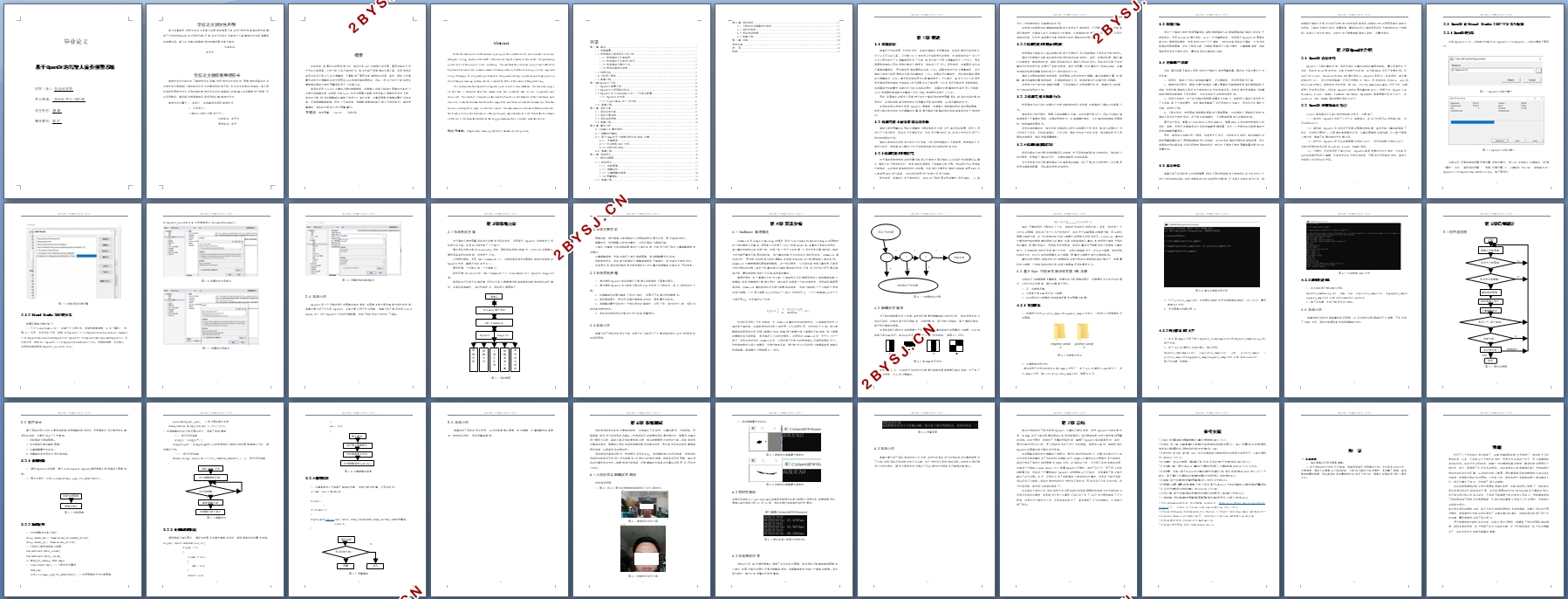基于OpenCV的驾驶人疲劳预警系统设计
无需注册登录,支付后按照提示操作即可获取该资料.
基于OpenCV的驾驶人疲劳预警系统设计(开题报告,外文翻译,论文10000字)
摘要
这些年来,我国经济发展速度飞快,如今已是GDP全球第二的大国,国民的购买力水平也在不断提高,之前一般人买不起的汽车,如今也成了很普通的交通工具,但是带来的却是众多且不断上升的交通事故,严重影响了国民的幸福感和安全感,其中,据统计危害最大的特大交通事故的发生原因有40%是疲劳驾驶导致的,所以,设计开发出一款实用且精度高的驾驶人疲劳预警系统是十分有意义的。
本系统采用OpenCV计算机开源视觉数据库,由摄像头获取人脸实时图像并对其进行灰度化和降噪处理,训练基于类haar特征的层叠分类器,并利用其从图像中先定位人脸,再定位人眼,然后将眼睛部位截取下来进行二值化处理,计算里面黑色像素的最大坐标差值,可得到眼睛高度值。设定一个给定值,当眼睛高度值连续五帧小于给定值时,触发报警模块,系统将对驾驶人进行预警警示。
关键词:疲劳预警; OpenCV; 人眼识别
Abstract
With the east wind of reform and opening to the outside world, our country's economic strength is rising, and now the GDP is the second largest country in the world. The purchasing power level of the people is also increasing. The cars that the ordinary people can't afford to buy have become a very common means of transportation, but the following is a very large and rising exchange. It is of great significance to design and develop a practical and high precision driver fatigue warning system, which is caused by 40% of the cause of fatigue driving.
This system uses the OpenCV computer open source visual database. The real-time image of the face is obtained from the camera with the notebook and its line is grayscale and de-noised. The classifier is trained on the classifier based on the features of the class Haar, and uses it to locate the human face from the image first and then relocate the human eye, then the eyes are intercepted to carry on the two values. The maximum coordinate difference between the black pixels in the calculation is the eye height, and a threshold is set. When the five frame of the eye is less than the threshold, the trigger alarm module is used to warn the driver.
Key Words:Fatigue early warning; OpenCV; human eye recognition;

目录
第1章 绪论 1
1.1选题背景 1
1.2检测驾驶人疲劳状态方法分析 1
1.2.1检测驾驶人生理信号 1
1.2.2检测驾驶人生理反应特征 2
1.2.3检测驾驶人操作行为 2
1.2.4检测车辆状态信息 2
1.3选题目标 2
1.4分析用户需求 3
1.5本章小结 3
第2章OpenCV介绍 4
2.1 OpenCV背景介绍 4
2.2 OpenCV应用领域及特点 4
2.3 OpenCV在Visual Studio 2017下安装与配置 4
2.3.1 OpenCV的安装 4
2.3.2 Visual Studio 2017的安装 6
2.4 本章小结 8
第3章 系统方案 9
3.1系统总体方案 9
3.2系统主要功能 10
3.3系统实现原理 10
3.4本章小结 10
第4章 算法分析 11
4.1AdaBoost算法描述 11
4.2 眼睛定位算法 12
4.3 基于Haar特征分类器训练生成XML步骤 13
4.3.1 采集样本 13
4.3.2创立样本VEC文件 14
4.3.3训练生成XML 15
4.4 本章小结 15
第5章 详细设计 16
5.1程序流程图 16
5.2 软件设计 17
5.2.1 获取图像 17
5.2.2 眼睛定位 17
5.2.3 计算眼睛的高度 18
5.2.4报警模块 19
5.3 本章小结 20
第6章 系统测试 21
6.1人脸定位及眼睛定位测试 21
6.2实时性测试 22
6.3系统测试结果 22
6.3本章小结 23
第7章 总结 24
参考文献 25
附 录 26
致谢 27
